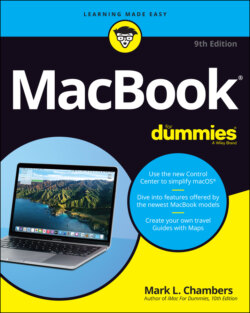Читать книгу MacBook For Dummies - Mark L. Chambers - Страница 28
Look, Ma, no moving parts!
ОглавлениеYou’re probably familiar with the common species of usbius flashimus, more commonly called the USB flash drive. With one of these tiny devices, you get the equivalent of a 4–512GB hard drive that plugs into a USB 3.0 port, allowing you to carry your data with you as you jet across the continents. But have you ever asked yourself, “Self, why don’t they make internal drives that use this same technology?”
Actually, dear reader, solid-state drives have been around for years. (Think the iPod shuffle and iPod nano.) Unfortunately, however, the solid-state memory used in today’s flash drives gets pretty expensive as capacity increases. In fact, cost has been the limiting factor, because a solid-state drive offers advantages that set it apart from a conventional magnetic hard drive:
No moving parts: Unlike a typical magnetic hard drive, you find no read-write heads and no magnetic platter — just gobs of happy silicon memory chips. In effect, a solid-state drive works along the same lines as your MacBook’s system RAM. Unlike your Mac’s RAM, though, a solid-state drive doesn’t lose the data it stores when you turn off your laptop. As you can imagine, no moving parts on a computer in motion is superior on two levels:The solid-state drive never wears out or needs replacing.If your laptop is accidentally abused (gets knocked off your desk), it’s far less likely that you’ll lose a hard drive’s worth of priceless data when it hits the ground.
Speed: Oh my goodness, is this thing fast! Your MacBook will boot, restart, or awaken in far less time, and everything you do on your laptop will benefit from the speed boost. A solid-state drive can read data far faster than a conventional magnetic hard drive.
Power usage: Forget your hard drive spinning up from sleep mode. The solid-state drive uses far less power than a conventional hard drive, resulting in significantly longer battery life.
Blessed silence: The solid-state drive is silent. (No more of that gargling noise while the disk is accessed. Sweet.)
